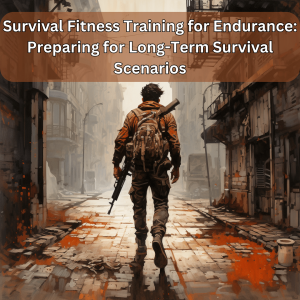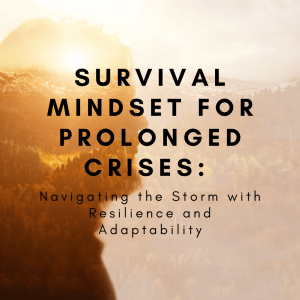In a world where unexpected natural disasters, societal breakdowns, or other survival scenarios can occur, being physically fit and mentally prepared is crucial for your long-term survival. Endurance training is one of the key components of survival fitness, as it equips you with the stamina and strength needed to handle physically demanding situations over an extended period. This beginner-friendly step-by-step guide will take you through the process of fitness training for endurance, ensuring you are well-prepared for any long-term survival scenario that may come your way.
Step 1: Assess Your Current Fitness Level
Before diving into any training regimen, it’s essential to assess your current fitness level. This self-assessment will help you set realistic goals and identify areas where improvement is needed. Keep in mind that endurance training requires a baseline level of fitness, so if you are new to exercise or have any underlying health issues, consult a healthcare professional before starting.
Step 2: Establish Your Goals
Define your fitness goals clearly. In the context of preparing for survival scenarios, your focus should be on developing overall endurance, strength, and resilience. Establish both short-term and long-term goals to track your progress effectively. Remember, the journey to peak endurance is a gradual process, so be patient with yourself.
Step 3: Choose Suitable Endurance Activities
Endurance training can take various forms, and the key is to find activities that you enjoy and are suitable for the survival skills you want to develop. Consider the following options:
Running/Jogging: Running or jogging is an excellent way to build cardiovascular endurance, which is crucial for long-distance travel in survival scenarios.
Hiking: Hiking helps you build leg strength and endurance, simulating the challenges you might face in rough terrain during a survival situation.
Cycling: Cycling is a low-impact activity that still improves cardiovascular fitness and leg strength.
Swimming: Swimming is a full-body workout that improves cardiovascular health and overall endurance.
Step 4: Create a Training Plan
Once you’ve chosen the activities you want to pursue, create a well-structured training plan. Your plan should include a mix of activities to prevent monotony and overuse injuries. Gradually increase the intensity, duration, and frequency of your workouts as your fitness level improves. Here’s a sample weekly plan:
- Monday: 30-minute jog
- Tuesday: 1-hour hiking
- Wednesday: Rest day or light stretching/yoga
- Thursday: 45-minute bike ride
- Friday: 30-minute swim
- Saturday: 1.5-hour hike with a backpack (gradually increase weight in the backpack over time)
- Sunday: Rest day or active recovery (gentle walking, stretching)
Step 5: Strength Training
While endurance is essential, strength training is equally vital for survival scenarios. It helps with tasks such as carrying heavy loads, building shelter, and defending yourself if necessary. Incorporate bodyweight exercises like push-ups, squats, lunges, and planks into your routine. Aim for two to three strength training sessions per week, focusing on different muscle groups.
Step 6: Nutrition and Hydration
Adequate nutrition and hydration are critical for endurance training and overall health. Consume a balanced diet rich in carbohydrates, proteins, healthy fats, and essential vitamins and minerals. Stay hydrated before, during, and after your workouts. In a survival scenario, you’ll need to find and utilize food sources, so consider learning about wild edibles and basic foraging skills.
Step 7: Rest and Recovery
Giving your body time to rest and recover is essential for making progress in your training. Overtraining can lead to injuries and burnout, which could be detrimental in a survival situation. Aim for 7-9 hours of quality sleep each night and listen to your body when it needs a break from intense training.
Step 8: Mental Preparation
Endurance training for survival scenarios is not just physical; it’s also mental. Practice mindfulness, meditation, or other relaxation techniques to stay focused and mentally resilient. In a crisis, a strong and focused mind can make a significant difference.
Step 9: Practice Survival Skills
Endurance training alone is not enough. As you prepare for long-term survival scenarios, practice essential survival skills like building shelter, starting fires, purifying water, and basic first aid. Combining physical fitness with practical skills will give you the best chance of survival.
Step 10: Stay Adaptable
In a real survival scenario, adaptability is crucial. While training is essential, keep in mind that every situation is unique, and being able to adjust your approach on the fly can make a significant difference in your survival chances.
In conclusion, fitness training for endurance is a vital aspect of preparing for long-term survival scenarios. By following this step-by-step guide, you’ll be on your way to building the physical and mental stamina needed to thrive in challenging situations. Remember, the journey to peak endurance is a gradual process, so stay committed, be patient, and stay ready for whatever the future may hold.





